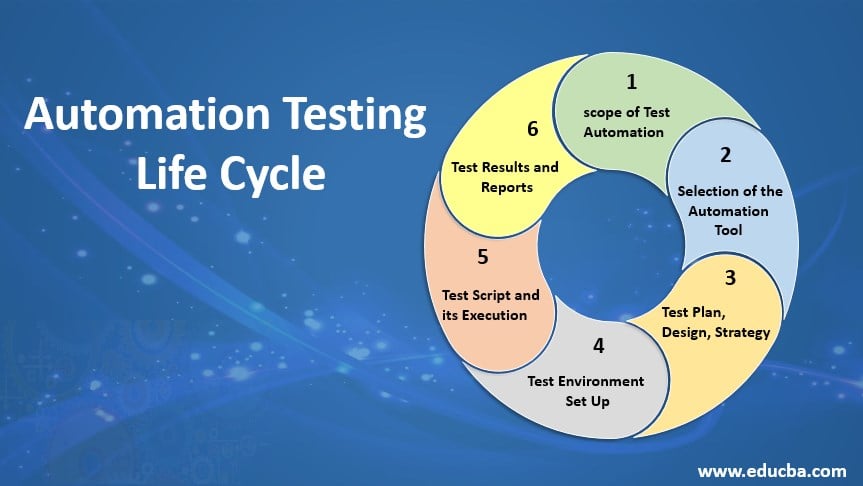From Guidebook to Automated Testing: A Comprehensive Overview to Transitioning Efficiently and Effectively
In the realm of software application testing, the shift from handbook to automated procedures has ended up being a significantly vital transition for companies seeking to boost effectiveness and accuracy in their screening practices. The journey from manual to automated screening is not without its obstacles, but when come close to tactically and with a clear strategy in mind, the advantages can be considerable.
Advantages of Automated Testing
Automated testing uses numerous benefits, enhancing performance and accuracy in software program development procedures. One primary benefit is the substantial decrease in screening time. Automated examinations can be run all at once on multiple devices and operating systems, significantly accelerating the screening phase contrasted to hands-on screening. This boosted performance permits faster responses on the high quality of the software application, making it possible for designers to recognize and resolve problems promptly.
In addition, automated testing ensures a higher degree of accuracy in spotting flaws. Consistency in testing is also enhanced, as automated examinations implement the same steps precisely each time they are run.
Picking the Right Tools

First of all, evaluate your objectives and needs. Recognize the scope of your job, the modern technologies involved, and the ability of your team. This evaluation will help you figure out the abilities and functions you need in your screening tools.
Secondly, take into consideration the compatibility of the devices with your existing processes and systems. Seamless assimilation with your present software application advancement lifecycle is essential to ensure a smooth change to automation.
Furthermore, assess the scalability and versatility of the devices. As your testing requires develop, the tools should be able to adapt and accommodate adjustments successfully.
Last but not least, consider the support and community around the devices. When executing automated screening, durable assistance and an active customer neighborhood can provide useful resources and support. By thoroughly thinking about these elements, you can pick the right devices that line up with your needs and set the stage for an effective transition to automated testing.
Composing Efficient Examination Scripts

When crafting test manuscripts, it is vital to consider the particular demands of the software application being checked and make certain that the manuscripts resolve all essential capabilities. Detailed and clear calling conventions for test manuscripts and test cases can boost readability and maintainability. Furthermore, integrating mistake handling devices within the examination scripts can help in recognizing and addressing concerns immediately.
Moreover, organizing test scripts into modular components can enhance reusability and scalability, decreasing redundancy and boosting performance in examination manuscript upkeep. Regular reviews and updates to examine manuscripts are crucial to maintain pace with evolving software needs and functionalities. By following these concepts, testers can create efficient and durable test manuscripts that add significantly to the success of automated testing processes.
Integrating Automation Into Workflows
Efficient integration of automation devices into existing process enhances and enhances procedures performance within software application growth cycles. When including automation blog here into workflows, it is crucial to determine repetitive tasks that can be automated to save time and reduce human mistake. By flawlessly integrating automated screening devices like Selenium or Appium into the software growth lifecycle, teams can attain faster responses on code modifications, bring about quicker bug discovery and resolution. This integration permits constant testing throughout the development process, making certain that any kind of issues are recognized early, leading to greater software program top quality. Additionally, automation can be used to cause examinations immediately after each code dedicate, giving immediate recognition and maximizing testers to focus on more complicated situations. Proper combination of automation tools requires partnership in between growth, screening, and operations teams to develop a unified operations that optimizes performance and performance in supplying premium software.
Guaranteeing a Smooth Transition
Effectively transitioning to automated screening includes thorough planning and mindful implementation to maximize and reduce interruptions effectiveness in the software advancement procedure - automation testing. To ensure a smooth change, it is necessary to begin by carrying out a detailed analysis of the existing screening procedures and determining areas where automation can bring the most substantial advantages. Involving with all stakeholders early while doing so, including designers, testers, and task supervisors, is crucial for garnering assistance and buy-in for the automation effort
Interaction is essential throughout this change phase. Clear communication of the goals, advantages, and assumptions of automated testing helps to handle any type of resistance or issues that might develop. In addition, giving ample training and sources for team members to upskill in automation tools and techniques is vital for guaranteeing a successful shift.

Conclusion
In conclusion, transitioning from manual to automated screening offers numerous benefits, consisting of raised effectiveness and dependability. By picking the suitable devices, creating efficient test manuscripts, and incorporating automation effortlessly into process, companies can see ensure a smooth and successful transition. It is essential to embrace automation as a beneficial property in software screening procedures to enhance general quality and efficiency.
In the world of software screening, the change from manual to automated processes has actually become a significantly crucial change for organizations looking for to improve effectiveness and precision in their screening methods. Automated examinations can be run at the same time on numerous gadgets and operating systems, significantly speeding up the testing stage compared to hand-operated testing. Uniformity in screening is likewise boosted, as automated examinations execute the very same steps specifically each time they are run.To guarantee the effective implementation of chosen screening tools, the production of reliable examination scripts plays a crucial role in validating the performance and efficiency of automated procedures - automation testing. By useful site following these concepts, testers can produce durable and efficient examination manuscripts that contribute considerably to the success of automated testing processes